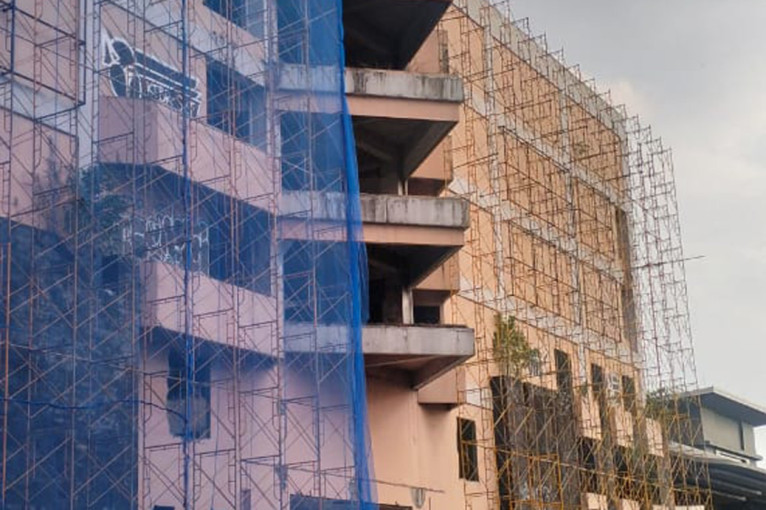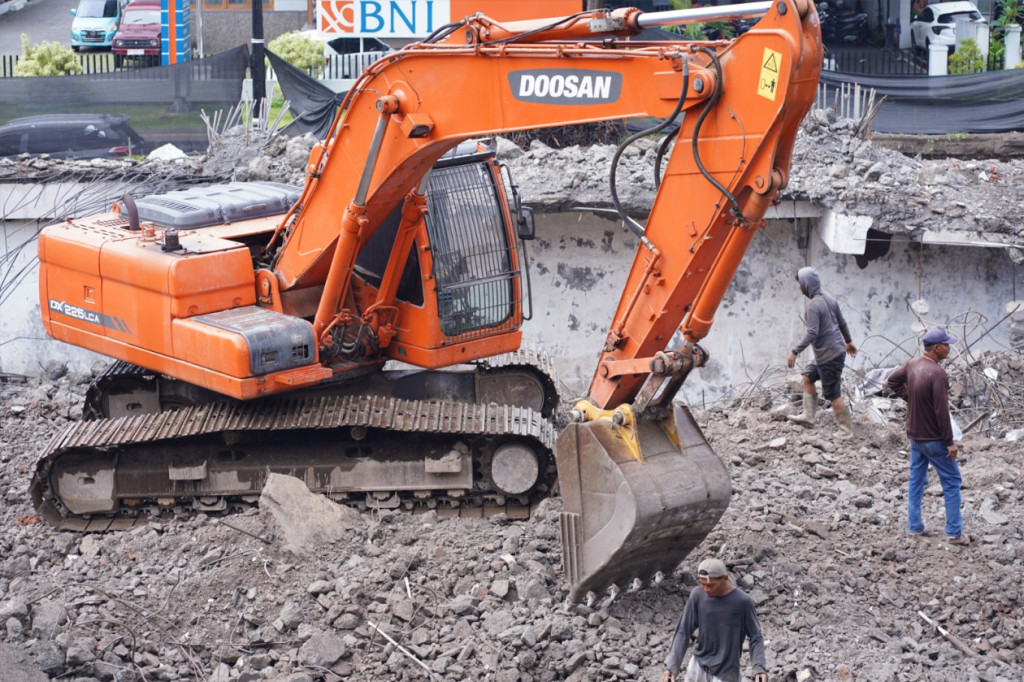
Universitas Gadjah Mada (UGM) is widely recognized for its focus on the development of science and technology and its strong commitment to realizing a sustainable campus environment.
As part of its sustainable campus initiative, UGM continues to expand the availability of green spaces scattered throughout various parts of the campus.
The green spaces at UGM are intended as recreational areas and to support the total green area in Sleman Regency.
According to data from the Sleman Regency Environmental Office, the current green area in the regency is around 8.7 percent, still far from the ideal 30 percent of the total land area.
To emphasize this commitment, UGM plans to add a green space on the former Gama Bookstore building site, which was leveled throughout January 2025.
The Director of Assets at UGM, Dr. Ahmad Sarwadi, revealed that this transformation is part of UGM’s vision to create a more environmentally friendly campus that better supports academic and social activities.
The addition is expected to provide space for the academic community to rest, socialize, and interact with nature amidst their busy academic schedules.
“The strategic position of this green space prevents rainwater from entering the GIK building and serves as a barrier between Kaliurang Street and GIK. GIK, as a melting pot between the campus and the industrial world, now has a public-friendly green space,” Dr. Sarwadi said on Saturday (Feb. 8).
He explained that the design of this green space would focus on aesthetics and comfort and adhere to sustainability principles.
Therefore, the planning and construction of the former Gama Bookstore site will consider three key aspects: ecological, hydrological, and social.
From an ecological perspective, the plants will primarily be local species suited to the local environment. This will enhance the quality of the ecosystem, support the conservation of both flora and fauna and absorb carbon dioxide (CO2) to help reduce greenhouse gas emissions.
“This RTH will also serve as a means of rehabilitating the land from the former building. The right vegetation will improve soil conditions and water quality,” he explained.

Next, from a hydrological perspective, the development of the space will integrate green infrastructure, such as a rainwater absorption system, into the soil as part of the landscaping. This will help reduce the potential for flooding.
Dr. Sarwadi noted that global climate change is causing shifts in weather patterns, making many cities more vulnerable to hydrological issues. Green spaces can serve as one adaptive solution to address these challenges.
“By increasing the quantity and quality of green spaces in the UGM area, we aim to strengthen our contribution to mitigating the impacts of climate change,” he hoped.
From a social perspective, Dr. Sarwadi explained that the design of this green space would also consider accessibility principles.
All facilities will be designed to be accessible to all community members, including people with disabilities. He hopes that lush green spaces can provide a place for individuals to rest, take walks, or exercise, reducing stress and improving overall health.
“I think it is time we commit to creating spaces for everyone,” said Dr. Sarwadi.
The director hopes that the green space on the former Gama Bookstore site will improve the quality of life for the academic community, support environmental conservation, and become an inclusive public space that benefits all members of the community around UGM.
“Through careful planning and collaboration between various parties, the development of this green space can become a public space for all,” he concluded.
Author: Triya Andriyani
Post-editor: Afifudin Baliya
Photos: UGM Directorate of Assets

